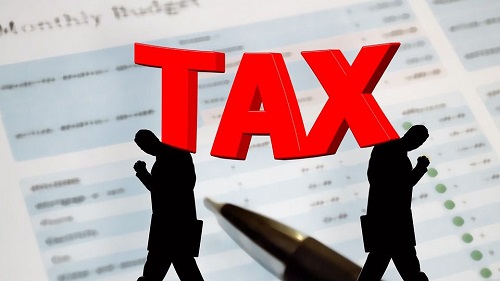Income Tax Assessment Procedure | Notice u/s 142(1)

In this article, we shall discuss about the various income tax notices, notice reply, reply for rectification of mistake and time limit for completion of assessments.
When can you expect a notice from the Income tax department?
Well, don’t panic if you receive a notice from the Income Tax Department (ITD). Most of the times, it is due to the following “very general” reasons: Amount of TDS claimed in your Income Tax Return does not match with that of ITD. Consider revising the TDS return of your TDS deductor, to match the amount of your TDS deducted by deductors as reflected in FORM 26AS and your books of account. Certain income not considered like interest from saving bank. Wrong deductions claimed, like exceeding the statutory limit. Mandatory information/ documents not provided, like cash deposited in bank exceeding Rs. 2 Lac Reminder for ITR not filed, section 143(2) explained below. Provisions of Clubbing not considered What to do when you receive income tax notice?
You have to satisfy the Assessing Officer (AO), i.e., the Income Tax Officer who is in-charge of your case. For this, you must send a written reply against the queries listed in the IT notice. This reply shall be submitted to the AO in the same jurisdiction from where such notice was sent. (This address- example Ward 1(1) or Circle 1(1), is mentioned in the notice. You can also “Know Your Jurisdiction” through the Income Tax site).
The AO might require certain other documents/ details vide issuing another questionnaire. Now, you got to reply further! Note- Keep the notice safely. Always submit a timely reply, i.e., within the time mentioned in the notice. But never ignore a notice. It is advisable to enclose all the relevant documents with your submission, along with a list of enclosures specifying/ listing the documents attached as annexure.
Notice under section (u/s.) 142(1)
In case you have not filed your income tax return, the AO might send this notice as a reminder for filing the belated return. Even in a case where the assessee has filed timely return, this notice might be sent. In such a situation, the reason for sending a notice to the assessee would be, to require certain other documents or details as per the wish of the AO. The AO may or may not start assessment after compliance of this notice. Further, compliance of this notice is mandatory even if the assessee is of the opinion that the details required by the AO are irrelevant. Notice u/s. 143(1) This is a common form of notice, received by most of the assessees. In general, it is referred to as “Summary assessment”, where the notice contains the tax calculation done by the assessee, as well as by the department. Thus, there are two computations shown in the notice, so that the assessee can clearly identify the difference for the additional tax demand or refund to be issued by the department.
Such differences may be due to the following reasons:
Any arithmetical error in the return Any incorrect claim, apparent from the return (example- deduction u/s. 80C as claimed by the assessee exceeds the statutory limit), etc. In short, this notice is a kind of intimation to the assessee, regarding any adjustment to be made in the income computed by the assessee. However, in case where the computation of both the department and the assessee brings out no difference, then the acknowledgement of the return shall be deemed to be the intimation u/s. 143(1) In case where this intimation shows demand to be paid by the assessee, and the assessee does not object, then such demand is to be paid within 30 days from the issue of notice. notice u/s. 143(2) This is “Scrutiny Notice”, which is basically sent after the notice u/s. 142(1) has been served upon the assessee. This shows that the AO was not satisfied with the documents provided by the assessee, or where no documents were provided at all as per the requirement u/s. 143(2). So, the AO now wants to further scrutinize the case of the assessee in detail. This notice shall be served, upto 6 months after completion of relevant assessment year (AY). For example- the notice u/s. 143(2) for the AY 2017-18 can be served upto 30th September 2017.
The notice is issued to carry out a scrutiny assessment u/s. 143(3), which is to be completed within 21 months from the end of relevant AY (for AY 2018-19, the revised time limit is 18 months, and from AY 2019-20 it shall be further reduced to 12 months). For example, for the AY 2017-18, all the cases under scrutiny assessment, shall be completed, i.e. AO shall pass order u/s. 143(3) upto 31st Dec. 2018.
notice u/s. 148 Where the assessment u/s. 143(3) has been done and the assessment order has already been passed by the AO, even then the case is not over. The AO has the power to re-open assessment in the case of assessee upto the expiry of 4 years from the end of relevant AY (6 years, where the income escaped assessment exceeds Rs. One Lac). Though, for reopening any case, the AO must have reasons to believe that any income chargeable to tax has escaped assessment. To initiate proceedings u/s. 147 (the order against notice under section 148 is passed u/s. 147), the onus of stating the reasons for re-opening the assessee’s case lies on the AO. Notice u/s. 148 cannot be sent in regard to the income involving matters which are the subject matter of any appeal, reference or revision.
Rectification u/s. 154: On receiving notice u/s. 143(1), if the department’s computation shows any shortfall in tax payment (i.e., where any demand has been raised), however, the assessee is of the opinion that the amount of tax computed by the department is incorrect on account of some mistakes apparent from record (i.e. prima facie). In such a case, the assessee has a right to file a written application to the AO, seeking rectification of such mistakes to reduce the amount of demand so raised. Where an application for amendment is made by the assessee, the AO shall pass the order in respect of this rectification within 6 months from the end of the month in which the rectification application is filed. Even the AO has a right to rectify his order passed in the case of the assessee, at his own motion. In this case, the rectification of an order can be made only within 4 years from the end of the financial year in which the order sought to be rectified was passed.
Recent posts

U
Unilex
U
Unilex
U
Unilex
U
Unilex
U
Unilex








 “I have registered my PVT LTD company and Trade MARK through UNILEX, had a smooth process and also their price are very reasonable across the industry.
Great Work Guys.......”
“I have registered my PVT LTD company and Trade MARK through UNILEX, had a smooth process and also their price are very reasonable across the industry.
Great Work Guys.......”
Your comment